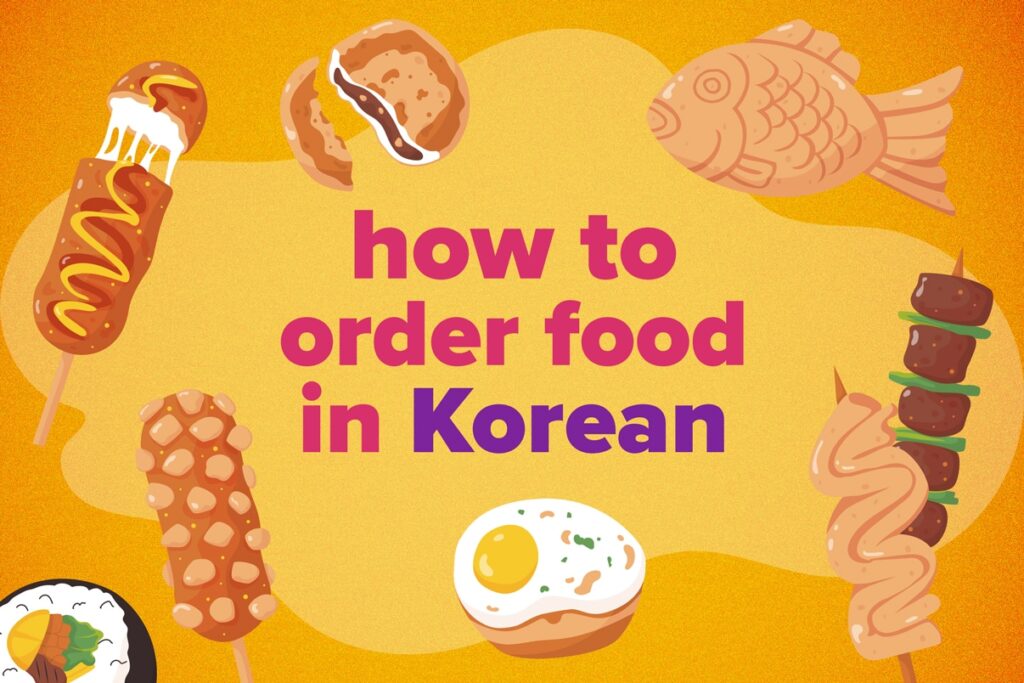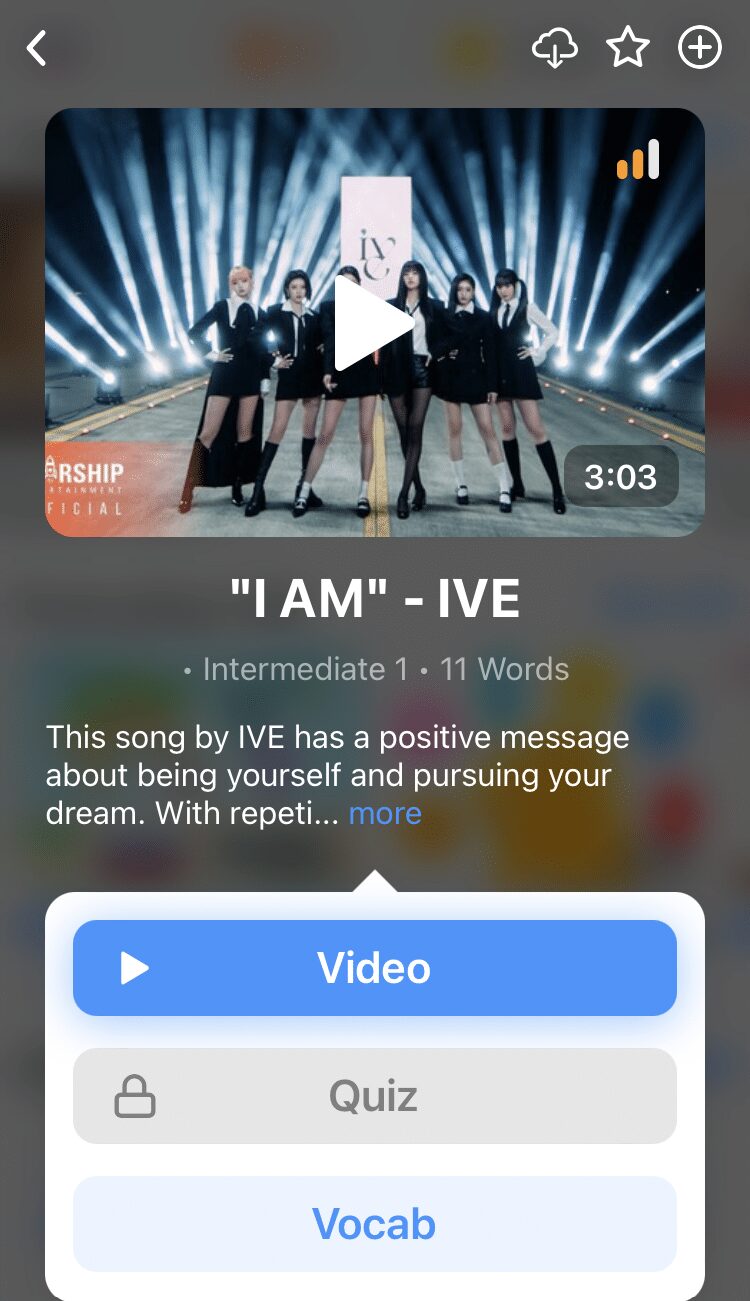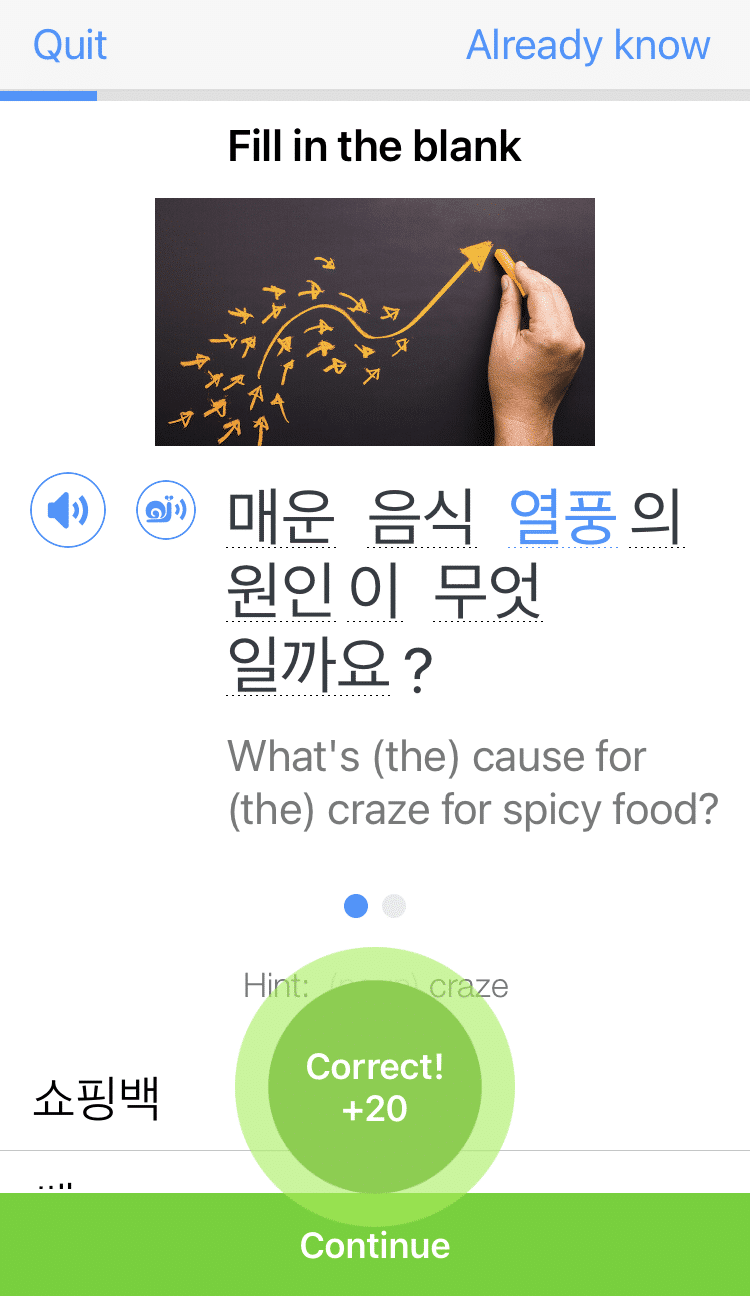How to Order Food in Korean

Learning a new language also give you the opportunity to explore the culture—including delicious food.
Dining out amps up your cultural immersion and lets you practice your Korean reading, listening and speaking skills all at once. It’s an opportunity to treat yourself while boosting your experience with the language.
Read on to learn exactly how to order food in Korean so you can take your learning to the real world.
Download: This blog post is available as a convenient and portable PDF that you can take anywhere. Click here to get a copy. (Download)
General Restaurant Phrases in Korean
Here are 20 expressions from our YouTube channel to get you started:
여기요! (yuh-gi-yo)
English: Over here!
A quick shout of this should get the attention of a passing waiter. That’s their cue to come straight to you.
___ 명이에요. (___ myung-ee-eh-yo)
English: There are ___ people.
When you enter the restaurant, you may either be approached by a worker who will ask how many are in your party before you get seated, or you may seat yourselves.
메뉴 주세요. (meh-nyu joo-se-yo)
English: Please give me the menu.
While some restaurants have the menus already on the table, you may need to ask for it yourself at times. There’s oftentimes a separate menu for drinks besides water as well.
뭐가 맛있어요? (mwo-ga ma-shi-ssuh-yo)
English: What is delicious?
Let’s face it: Choosing something from a menu is hard. Ask this to your waiter to make choosing your meal a little easier—it’s similar to the English “What do you recommend?”
얼마에요? (uhl-ma-eh-yo)
English: How much is it?
Most menus will have the prices listed, but some places might choose not to for whatever reason. This can also occur for exclusive or limited items. Make sure you know how much you’re paying before you order it!
Korean Phrases for Ordering Your Meal
이거 주세요. (ee-guh ju-se-yo)
English: Please give this. / I’ll have this.
Short and simple. Just point to the dish on the menu and say this, and you’re all set.
If you want to say the name itself, just say it and follow up with 주세요. This also goes for when you need something else after you’ve already gotten your requested meal.
___ 일 인분 주세요. (___ il-een-boon ju-se-yo)
English: Please give one more serving of ___.
It’s highly likely that you’ll want another serving of something, whether it’s a Korean barbecue pork set or a tasty side dish.
Notice in this phrase that the number one is 일 인분, which uses the Sino-Korean numeric system. So, if you want two servings, you would say 이 인분 (ee-een-boon), three servings would be 삼 인분 (sahm-een-boon) and so forth.
___ 더 주세요. (___ duh ju-se-yo)
English: Please give more of ___.
If you don’t want to use the previous phrase or forgot your Sino-Korean numbers, then you can just use this one. It’s simpler, shorter and gets the same point across.
To get a sense of when to use which phrase, keep an eye out for TV shows and movies that feature scenes in restaurants (there are plenty!). You can also search for key words and phrases on an immersion program like FluentU.
FluentU takes authentic videos—like music videos, movie trailers, news and inspiring talks—and turns them into personalized language learning lessons.
You can try FluentU for free for 2 weeks. Check out the website or download the iOS app or Android app.
P.S. Click here to take advantage of our current sale! (Expires at the end of this month.)
Korean Phrases for Special Food Requests
채식 메뉴 있어요? (che-shik-meh-nyu ee-ssuh-yo)
English: Do you have a vegetarian menu/vegetarian dishes?
채식 means vegetarianism. Luckily, there are just as many delicious Korean vegetarian dishes as there are meat-based ones, from hearty stews to rice or noodle-based meals. You’ll have no problem finding one on the menu that will catch your eye.
안 맵게 해 주세요. (ahn-mep-geh heh-ju-se-yo)
English: Please don’t make it spicy.
It’s no secret that Koreans love spicy food, so it’s okay if some dishes end up being a bit too hot to handle. There’s no shame in making this request to the server—sometimes, the spice really can be overbearing!
저 ___ 알레르기 있어요. ( juh ___ ahl-leh-leu-gi ee-ssuh-yo)
English: I am allergic to ___.
If you have allergies, you know how critical it is to communicate them properly at a dining establishment. Speak this phrase and fill in the blank with whatever you’re allergic to. Here are a few common food allergies that might be relevant to you:
- 땅콩 (ddang-kong) — peanuts
- 우유 (woo-yoo) — milk
- 달걀 (dal-gyal) — eggs
- 조개 (jo-gae) — shellfish
Korean Phrases for Finishing Your Meal
계산서 주세요. (geh-san-suh ju-se-yo)
English: The check, please.
It’s highly likely that your table will be stuffed with plates, both from the side dishes and the actual main course. You may still be nibbling on whatever’s left. Make sure to let your waiter know when you’re finally finished!
카드 받으세요? (ka-deu ba-deu-se-yo)
English: Do you accept credit cards?
Many establishments in Korea only take cash, so it would be wise to carry a decent amount if you’re traveling in the country.
If the restaurant you’re eating at only accepts cash payment, the waiter may say 현찰만 받아요 (hyun-chal-mahn ba-da-yo), which means “We only take cash.”
따로따로 계산할게요. (dda-ro-dda-ro geh-san-hal-ge-yo)
English: Please split the bill.
Beware of asking this of the waiter when you’re dining with Korean natives! See the dining etiquette section below for all about splitting the restaurant bill with your Korean friends.
이거 포장 돼요? (ee-guh po-jang dweh-yo)
English: Can I take this to-go?
You’ll most likely have a good amount of leftovers—Korean meals are known for being hearty. Spare no delicious crumb and make sure you take whatever’s left!
잘 먹었습니다. (jal meog-uh-sseub-ni-da)
English: I ate very well.
This is an essential phrase that’s spoken at the end of any meal in any setting. It expresses that you genuinely enjoyed the meal and is taken as a sign of respect to your food provider and your dining mates.
Basic Dining Etiquette in Korean Restaurants
There aren’t many unique rules to ordering in Korean restaurants. For the most part, formality and politeness are, as usual, expected and welcomed, so it’d be good to be comfortable with formal versus informal Korean phrasing.
One thing you’ll want to know when you’re in Korea is that tipping for most services isn’t expected, so what you see on the receipt at a Korean restaurant is all you’ll need to pay.
And if you happen to be dining in the company of Korean natives, good luck trying to split the bill!
That’s casually known as “Dutch pay” in Korea, and it’s customary for one person to pay for everyone regardless of how much was eaten. It’s a sign of politeness and friendship, although attempts to foot the bill can become quite aggressive, so don’t be alarmed if you see a party of people having a tug-of-war with the receipt at their table.
Korean Foods to Know
One of the best things about Korean cuisine is the colorful assortment of 반찬 (ban-chan) — “side dishes.” Expect a bunch of free side dishes when you didn’t ask for any, but don’t be intimidated by how many little plates of food are set on your table!
The almighty staple of any Korean meal is 김치 (kim-chi) — “fermented vegetables.” Kimchi has strong cultural significance and is already promoted in international cuisine.
The most popular kimchi are made of cabbage or radish, but all variations are marinated in rich spicy seasoning. You’ll likely get more than one kind, in fact. Some of the more common types include:
- 배추김치 (bae-chu-kim-chi) — cabbage kimchi
- 깍두기 (kkak-du-gi) — chopped radish
- 총각김치 (chong-gak-kim-chi) — whole radish kimchi
- 오이김치 (oh-ii-kim-chi) — cucumber kimchi
Another popular side dish is 나물 (na-mul), a broad term that refers to vegetables or plants that are seasoned with sesame oil, vinegar, garlic or soy sauce.
Some can be quite rich in flavor, while others are simple and refreshing. There’s plenty of variations, but here are a few:
- 콩나물 (kong-na-mul) — seasoned soybean sprouts
- 시금치나물 (shi-geum-chi-na-mul) — seasoned spinach
- 가지나물 (ga-ji-na-mul) — seasoned boiled eggplant
Next we have 전 (jeon) — “pan-fried pancakes.” These crispy snacks can easily become addicting. In fact, 전 can appear as its own meal! There are, of course, different kinds with different ingredients, including:
- 파전 (pa-jeon) — scallion pancakes
- 김치전 (kim-chi-jeon) — kimchi pancakes
- 해물 파전 (hae-mul pa-jeon) — seafood and scallion pancakes
And our final must-know side dish is 볶음 (bok-keum), or “stir fry.” These can get quite filling if eaten in large quantities, so make sure you leave room for your actual meal!
You can get a taste of some unique flavors depending on the sauce and ingredients used in the stir fry. For example:
- 오징어채볶음 (oh-jing-uh-chae-bok-keum) — stir-fried squid
- 멸치볶음 (myul-chi-bok-keum) — stir-fried anchovies
- 호박볶음 (ho-bak-bok-keum) — stir-fried zucchini
The next time you hop into a Korean restaurant, you’ll want to use your mouth not just to chow down on delicious food, but also to talk and engage in an authentic conversation.
Put these phrases to good use so that you’ll leave happy with both a full stomach and successful practice of your Korean language skills.
Happy eating!
Download: This blog post is available as a convenient and portable PDF that you can take anywhere. Click here to get a copy. (Download)
And One More Thing...
If you enjoyed this post, you're already halfway to having the time of your life learning Korean with FluentU!
FluentU makes it possible to learn with K-pop videos, funny commercials, entertaining web series and more. Just a quick look will give you an idea of the variety of FluentU videos on offer:

FluentU really takes the grunt work out of learning languages, leaving you with nothing but engaging, effective and efficient learning. It's already hand-picked the best videos for you (which are organized by level and topic), so all you have to do is simply choose any video that strikes your fancy to get started.
Each word in the interactive captions comes with a definition, audio, image, example sentences and more.

Access a complete interactive transcript of every video under the Dialogue tab, and easily review words and phrases from the video under Vocab.

You can use FluentU’s unique Quiz Mode to learn the vocabulary and phrases from the video through fun questions.

FluentU keeps track of what you're learning, and tells you exactly when it's time for review, giving you a 100% personalized experience.
Review sessions use video context to help embed the words in your memory.
Start using the FluentU website on your computer or tablet or, better yet, download the FluentU app from the iTunes or Google Play store. Click here to take advantage of our current sale! (Expires at the end of this month.)








